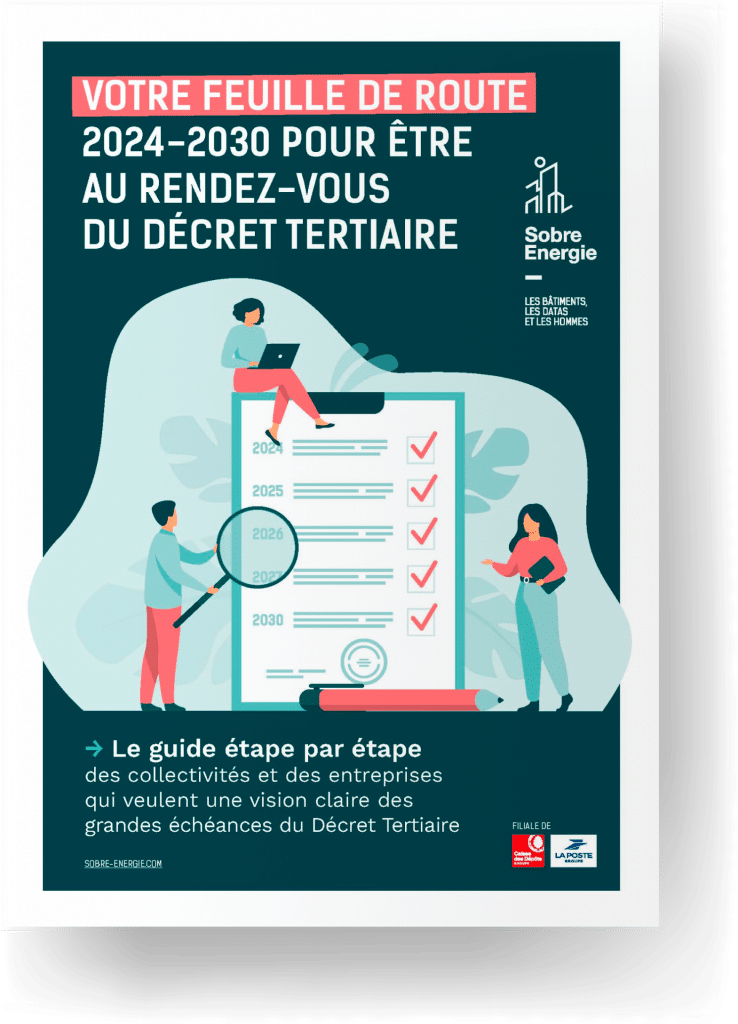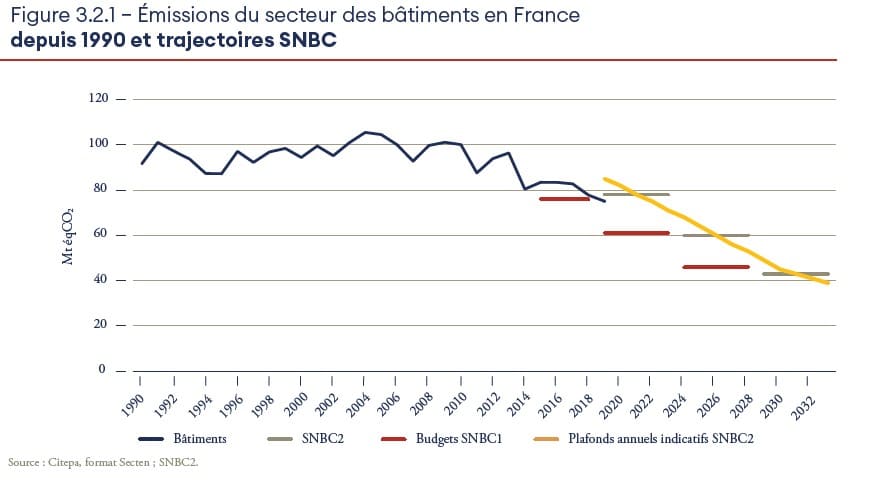-
Summary
Current state of affairs
In France, the building sector (residential & tertiary combined) represents 44% of final energy consumption (source Ministry of Ecological Transition). Concerning its carbon impact, 17% of greenhouse gas (GHG) emissions in 2019 were due to buildings (source Haut Conseil pour le Climat HCC)
-
Objectives of the National Low-Carbon Strategy (SNBC)
This roadmap was introduced in 2015 in the Energy Transition Law for Green Growth. It sets the course for France to fight against global warming. To do this, it defines, sector by sector, the main orientations and the trajectory for reducing GHG emissions by 2050.
Carbon budgets are associated with each time period: 2019-2023, 2024-2028, 2029-2033.
Thus, for the period 2019-2023 , the 2nd carbon budget provides for a reduction of 3.5Mt CO2 eq/year in the building sector . Against -1.9 Mt CO2 eq/year over the last period (2015-2018). The ambition is strong, it almost amounts to doubling the reduction effort for buildings.
An objective in line with the tertiary decree for buildings of more than 1000m2 (offices, shops, education, hospitals, museums, etc.).
As a reminder, this decree provides for -40% final energy consumption by 2030, -50% by 2040 and -60% by 2050. All compared to a reference year after 2010.
-
What action levers?
In recent years, buildings have already reduced their energy consumption, as shown in this HCC graph above. This should continue in particular on the heating station: a downward trend due to the lower carbon intensity of the heating energy used. With, for example, the ban on oil boilers in new buildings since July 1 , within a year for old buildings.
So to be even more efficient in terms of energy, the HCC underlines in its 2021 report the importance of sobriety of use. This involves informing and raising awareness among occupants :
-firstly, sobriety in the consumption of energy services (moderate heating and air conditioning temperatures)
- then good use of the equipment available
-finally regular maintenance of the building
So many good practices, which can represent up to 13.5% energy savings (figures from the Sustainable Real Estate Observatory OID).
Our article to learn more about the role of occupants in the energy efficiency of buildings
Our solutions to train the occupants of your buildings in eco-friendly actions
-
Ambition BBC
Then by focusing in parallel on energy management we can obtain an additional 30% reduction according to the OID. This involves technical adjustments (e.g. central building management of the GTB type, retro-commissioning).
Commitment to good sobriety practices and an energy management system would therefore make it possible to achieve around half of the effort.
In addition, it is also possible to promote the building's energy production by, for example, installing a solar power plant on the roof. Or by recovering the heat emitted by a data center type installation.
Finally, the last lever remains complete thermal renovation . In a study published last January, ADEME recommends carrying out this renovation in a limited number of stages. Objective for it to be as efficient as possible. The report highlights the need for a holistic approach to defining relevant work packages. Beyond 2 stages of work, the ambition to reach the BBC level (low consumption i.e. 50KWh/m2/year ) is compromised.
🤖 Summarize this article with an AI
Click on a button to automatically sum up this page with the AI of your choice.

